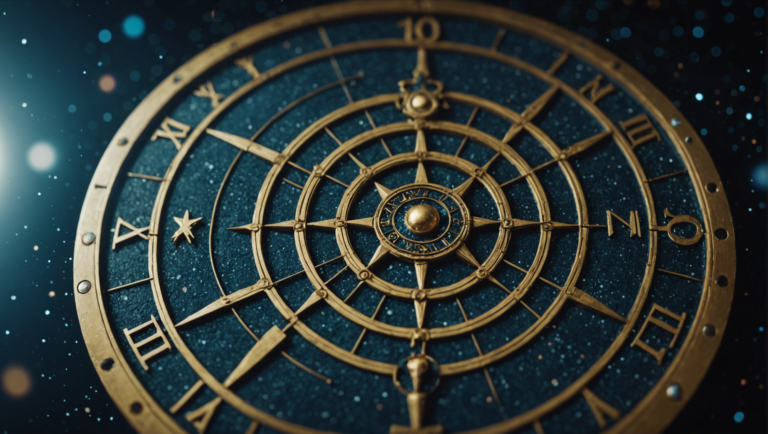When Is The Astrological New Year
Unveiling the Astrological New Year: Timing and Significance
Discovering the Start of the Astrological Cycle
Timing of the Astrological New Year
The concept of the astrological new year is fascinating, marking a period of beginnings and renewed energies. Unlike the calendar new year that falls on January 1st, the astrological new year begins when the Sun enters the first sign of the zodiac, Aries. This event occurs around March 20th or 21st each year, coinciding with the Spring Equinox in the Northern Hemisphere. This timing is not arbitrary but deeply rooted in the movements of celestial bodies and their energetic influences on Earth.
The moment the Sun shifts into Aries, an energy of initiation and pioneering spirit floods the cosmos, reflecting the essence of the ram, Aries’ symbol. This is a time for setting intentions, planting seeds for future endeavors, and embarking on new journeys with boldness and courage. The astrological new year ushers in a cycle of rebirth and rejuvenation, symbolized by the renewal all around us in the natural world during spring.
Significance of the Astrological New Year
Understanding the deeper significance of this time can provide insight into personal growth and the collective human experience. Aries, being the first sign of the zodiac, represents the self, individuality, and assertiveness. This period encourages looking inward to understand our desires and outward to take decisive action. It is a potent time for manifestation work, as the fresh energies are ripe for initiating change and making strides toward achieving personal goals.
Moreover, the astrological new year is a reflection of the cyclical nature of life and the universe. Just as the seasons change and bring about growth and decay, so too does the astrological cycle encourage continuous evolution and transformation. This period serves as a reminder that there is always an opportunity for a fresh start, for letting go of the old to make way for the new.
Embracing the Energies of the Astrological New Year
To fully embrace and harness the energies of the astrological new year, consider the following practices:
-
Set Intentions: Take advantage of the energetic fresh start by setting clear, focused intentions for the coming astrological cycle. Reflect on what you wish to manifest in your life and where you want to direct your energy.
-
Begin New Projects: With Aries’ bold and adventurous spirit influencing the cosmos, it’s an auspicious time to launch new projects or take the first steps toward your goals.
-
Personal Reflection and Growth: Use this time for self-reflection. Consider the lessons from the previous cycle and how you can apply them moving forward to grow and evolve.
-
Renewal Rituals: Engage in rituals or activities that symbolize renewal and rebirth. This could be as simple as spring cleaning your living space, starting a new exercise regime, or planting a garden.
Navigating Challenges and Opportunities
While the astrological new year brings a surge of positive energy, it’s also a period of intense dynamism that can sometimes feel overwhelming. Aries’ fiery nature can lead to impatience or impulsiveness. Balancing this energy by grounding oneself and maintaining mindfulness can help in navigating this powerful time. Recognize that with beginnings come challenges. Viewing these as opportunities for growth rather than obstacles can transform the way we approach our goals and dreams.
Final Thoughts
The astrological new year is a time of significant potential and powerful energies for transformation and renewal. By understanding its timing and significance, we can align ourselves with these cosmic forces to initiate change, pursue personal growth, and manifest our aspirations. As we enter this dynamic period, let us embrace the spirit of Aries—fearless, determined, and pioneering—to lead the way into a fulfilling and successful cycle ahead.
Historical Perspectives on the Astrological New Year
The passage of time has always fascinated humanity, leading to the creation of various methods to track and celebrate the cycle of the seasons, months, and years. Among these, the concept of the New Year has varied interpretations across cultures, with one of the most intriguing being the astrological New Year. This significant event is not only a testament to humanity’s enduring quest to understand the cosmos but also highlights the rich historical tapestry that has shaped our view of time and astrology.
Unveiling the Roots of Astrological Traditions
The study of astrology, which dates back thousands of years, has played a pivotal role in the way ancient civilizations understood the cosmos and its influence on earthly events. Astrologers, who were often revered as wise sages or priests, would meticulously observe the stars and planets to forecast events and mark the passage of time. The astrological New Year, therefore, is deeply rooted in these ancient practices, signifying a time of renewal and potential change based on the positions of celestial bodies.
The Start of the Astrological Cycle: The Spring Equinox
The astrological New Year is traditionally celebrated with the entrance of the Sun into Aries, which coincides with the Spring Equinox. This event, usually occurring around March 20th or 21st, marks the beginning of the zodiacal cycle. For ancient astrologers, this was a time of rebirth and rejuvenation, as the equinox symbolizes a balance between day and night, light and dark, reflecting nature’s awakening from the winter slumber. This equinox thus heralds a period of fresh starts and new beginnings, aligning with the natural world’s cycle of growth and renewal.
A Global Mosaic of Astrological Insights
Across different cultures, the significance of the astrological New Year has been celebrated in myriad ways, each adding a unique voice to the understanding of this celestial event. In Babylonian civilization, for instance, the New Year festival of Akitu was aligned with the Spring Equinox and the Sun’s entry into Aries, involving rituals and ceremonies to secure the favor of the gods for the coming year. Similarly, in ancient Rome, the calendar was originally aligned with the lunar cycles and the seasons, with March traditionally marked as the start of the year, echoing the astrological significance of the Spring Equinox.
The Evolution of Astrological New Year Through Ages
As the centuries progressed, the observation and interpretation of the astrological New Year evolved, shaped by advancements in astronomy and shifts in cultural practices. The Gregorian calendar reform, which established January 1st as the beginning of the New Year, shifted the focus away from the astrological and agrarian significance of March. However, the astrological New Year continues to be a pivotal moment for astrologers and those who follow the zodiacal calendar, reflecting a time to look ahead, set intentions, and align with the cosmic energies of renewal.
The Continuing Legacy of Astrological Traditions
Today, the astrological New Year remains a vibrant part of astrological practice, offering a moment of reflection, foresight, and connection to a tradition that spans millennia. It serves as a reminder of humanity’s enduring quest to find meaning and guidance in the stars, and the timeless nature of our search for understanding and harmony with the cosmos.
The historical perspectives on the astrological New Year provide a fascinating glimpse into how our ancestors viewed the importance of celestial events. It underscores the fact that while our methods of timekeeping and our calendars may have evolved, the profound connection between humanity and the cosmos remains unchanged, inspiring us to continue exploring the mysteries of the universe and our place within it.
Aries: The Trailblazer of Zodiac Beginnings
Understanding the Astrological New Year
The astrological calendar marks its beginning with the entrance of the sun into the first zodiac sign, Aries. This event, typically occurring around March 20th or 21st each year, heralds the astrological new year. It is a time when the winter’s pause gives way to the bursting life of spring, embodying the pioneering spirit and vitality Aries is known for. This point in time is not just a celestial occurrence but a profound symbol of new beginnings, inspiration, and the innate human drive towards action and renewal.
The Aries Archetype: Embodiment of Beginnings and Bravery
Aries, represented by the Ram, is synonymous with courage, initiative, and independence. These trailblazing qualities are especially significant at the start of the astrological new year, setting a tone of fearless forward momentum for the months to come. Aries’ ruling planet, Mars, underscores this sign’s dynamism and willingness to confront challenges head-on. As the first sign of the zodiac, Aries is the spark that ignites the cycle of life, a fitting emblem for the rejuvenation that the astrological new year symbolizes.
Astrological New Year’s Impact on Personal and Collective Spheres
The commencement of the astrological new year is a powerful period for setting intentions and initiating new ventures. It encourages individuals to embrace Aries’ pioneering spirit, urging them to break free from the past’s confines and boldly step into uncharted territories. On a collective level, this time mirrors a universal readiness to address lingering issues with renewed vigor and to foster innovations that promise to propel society forward.
Celebrating the Astrological New Year: Rituals and Reflections
Acknowledging the astrological new year can take many forms, from introspective practices like journaling and meditation to more outward expressions such as spring-cleaning or starting new projects. The essence of this celebration is to honor the spirit of renewal and the potential for transformation that Aries embodies. It is an opportune moment to reflect on personal aspirations, assess progress on goals, and adjust courses as necessary, always with an eye towards growth and improvement.
Navigating Challenges with Aries’ Resilience
As with any beginning, the astrological new year can bring its share of challenges and uncertainties. Embracing Aries’ resilience, individuals can approach these hurdles not as insurmountable obstacles but as opportunities to demonstrate their strength and adaptability. By embodying Aries’ fearless approach to life, one can navigate this period with confidence, using any setbacks as stepping stones to greater achievements.
The Astrological New Year as a Catalyst for Change
The rebirth that marks the astrological new year is more than a temporal milestone; it is a catalyst for profound personal and collective change. It invites an examination of what it means to lead, to take initiative, and to courageously pursue goals that resonate with one’s deepest aspirations. In this light, Aries doesn’t just signify the start of a new cycle but underscores the ongoing journey of growth and self-discovery that defines the human experience.
Final Thoughts: Embracing the Journey with Aries’ Bold Spirit
As the astrological new year unfolds, it offers a canvas upon which to paint our dreams and ambitions. Leveraging Aries’ bold, pioneering spirit, this period beckons us to move forward with courage, embrace change, and pursue our goals with an unwavering commitment to growth and innovation. It reminds us that every end is merely the precursor to a new beginning, filled with limitless possibilities for those brave enough to pursue them.
How Different Cultures Celebrate the Astrological New Year
The transition from one astrological year to the next is a moment imbued with symbolism, renewal, and celebration across different cultures around the globe. While many are familiar with January 1st marking the New Year in the Gregorian calendar, the astrological new year is a distinct occurrence, deeply entwined with celestial movements and the vernal equinox. It is a time when the sun enters the first sign of the zodiac, Aries, heralding a season of rebirth and new beginnings. This article delves into the varied and vibrant ways in which this significant time is observed across cultures, showcasing the rich tapestry of traditions and rituals that mark the astrological new year.
Celebrations Under the Stars: A Global Perspective
The astrological new year, typically falling around March 20th or 21st, aligns with the spring equinox in the Northern Hemisphere, a time when day and night are of almost equal length. This celestial event has been revered since ancient times, giving rise to a multitude of cultural traditions and celebrations. Here, we explore how different communities honor this astronomical transition, each adding their own unique flavor to the festivities.
The Vibrancy of Nowruz
Nowruz, meaning "new day" in Persian, is perhaps one of the most widely celebrated markers of the astrological new year. Rooted in the ancient Zoroastrian religion, Nowruz is a cherished holiday in Iran and neighboring countries, as well as among various diaspora communities around the world. It is a time of joy and renewal, characterized by the sprouting of greens, the cleaning of homes, and the gathering of families. Central to the observance is the Haft-Seen, a specially prepared table setting that includes seven items starting with the letter "s" in Persian, each symbolizing a different hope for the new year, such as rebirth, love, and health.
The Esoteric Mysteries of Western Astrology
In many Western countries, the astrological new year is recognized and celebrated by those who study and follow astrology. While not a public holiday, it marks an important time for reflection, intention-setting, and the reading of astrological charts to divine what the coming year might hold. Astrologers and enthusiasts may hold workshops, rituals, or private readings to honor this transition, focusing on the themes of Aries—courage, initiation, and new beginnings.
The Timeless Traditions of Bali’s Nyepi
Unique in its observance, Nyepi is the Balinese Hindu celebration of the Saka New Year, which, although based on a different lunar calendar, shares the spirit of reflection and renewal with the astrological new year. Unlike other new year celebrations that are marked by loud festivity, Nyepi is a Day of Silence, where the entire island of Bali comes to a standstill. There is no travel, no work, and even no electricity; instead, it is a day for meditation, fasting, and introspection, designed to reset both the spirit and the natural world.
The Ancient Rites of the Maya and Aztecs
The pre-Columbian civilizations of the Maya and Aztecs in Mesoamerica had their own methods of marking the astrological new year, deeply connected to their sophisticated calendars and cosmology. Their new year festivities were tied to agricultural cycles, deities, and celestial events, with rituals that included offerings, bloodletting, and ceremonial ball games. Although the direct observance of these traditions has been largely lost due to colonization, modern-day descendants and practitioners seek to revive and honor these ancient customs through reconstructed ceremonies and academic study.
Each of these celebrations, from the communal feasts of Nowruz to the silent reflection of Nyepi, underscores humanity’s enduring fascination with the cosmos and the cycles of the earth. They remind us of our shared history under the stars and the common threads of hope, renewal, and connection that the astrological new year represents. In recognizing and respecting these diverse traditions, we gain insight into the myriad ways human cultures have sought to understand and celebrate the mysteries of the universe.
The Astrological New Year and Personal Renewal: A Guide to Setting Intentions
Understanding the Astrological New Year
At the heart of astrological practice is the passage of time and the transition of the celestial bodies in our sky. The astrological new year is marked by the Sun’s ingress into Aries, the first sign of the zodiac, which typically occurs on or around March 20th each year. This equinoctial point heralds a time of new beginnings, fresh starts, and the initiation of the zodiacal cycle. Unlike the calendar new year, which is universally set on January 1st, the astrological counterpart aligns with the vernal equinox, making it a moment deeply rooted in the rhythms of the natural world and cosmic movements.
Personal Renewal Through Astrological Insights
Astrology offers more than just a way to predict future events; it is a tool for personal insight and growth. The commencement of the astrological new year is an optimal time to set intentions for the months ahead. It’s a period that energetically supports self-reflection, goal-setting, and the clearing away of old patterns that no longer serve us. Engaging with this cosmic new beginning allows individuals to align their personal cycles with those of the larger universe, fostering harmony and facilitating growth.
Setting Intentions with the Zodiac
The practice of setting intentions is a powerful one, enabling individuals to articulate their goals, desires, and aspirations. In the context of the astrological new year, intention-setting can be deeply symbolic and profoundly effective. One method involves contemplating the qualities of Aries – courage, initiative, and leadership – and integrating these themes into personal goals. However, the process can and should be personalized. Reflecting on your sun sign, ascendant, or other significant placements in your natal chart can offer insights into the areas of life that may need attention or renewal in the coming year.
Embracing the Power of Aries Season
Aries, being the spark that ignites the zodiacal cycle, carries with it an insatiable drive and dynamic energy. Embracing this influence means stepping into one’s power, taking decisive action towards goals, and being fearless in the pursuit of what sets one’s soul on fire. Aries season is a call to action, urging individuals to move boldly forward, even in the face of obstacles. This period does not just signify personal rebirth; it actively encourages it.
Navigating Challenges and Embracing Growth
While the astrological new year is a time of potential and promise, it also comes with its challenges. The vigorous energy of Aries can sometimes lead to impulsiveness or hastiness. It’s important, during this period, to channel this abundant energy constructively. Balancing the fiery impulse of Aries with mindful reflection can lead to fruitful outcomes. Remember, setting intentions is just the first step; following through with consistent action and reflection is what leads to actual growth and transformation.
Astrology as a Guide for Personal Evolution
Astrology, at its core, is about understanding and working with the energies present in our lives. The astrological new year provides a unique opportunity to align with the cosmos in setting forth on new endeavors or recommitting to long-term goals. By understanding the significance of this time and harnessing its potential, individuals can achieve greater self-awareness, fulfillment, and personal growth. Whether you are deeply versed in astrological practices or simply curious about what the stars have to say about your path, this annual milestone is a moment worth observing with intention and openness to personal renewal.
Conclusion
The journey through the cosmic significance of the Astrological New Year, anchored by the spring equinox, reveals a period steeped in history, vibrant cultural expressions, and personal significance. As we traverse the timeline from its historical roots to modern-day celebrations, each segment of our exploration offers a unique lens through which to view this celestial milestone.
Unraveling the timing and significance of the Astrological New Year uncovers its alignment with the spring equinox, usually occurring on or around March 20th each year. This moment, when day and night stand in perfect balance, heralds a time of new beginnings. It’s a reminder of the perpetual motion of our universe, a dance between the sun and earth that signals rebirth and renewal across the globe.
Delving into historical perspectives, we recognize that the observance of the Astrological New Year is far from a contemporary concept. Ancient civilizations, from the Babylonians to the Greeks, marked this time with festivals and rituals celebrating the renewal of the earth. This lineage of celestial observation underscores the deep-rooted human desire to understand and connect with the cosmos, seeking in the stars guidance for terrestrial life.
Aries, the first sign of the zodiac, rightly known as the Trailblazer, takes center stage with the advent of the Astrological New Year. Symbolizing initiation, courage, and action, Aries embodies the spirit of renewal that defines this period. As we move under its influence, there’s a collective impetus to forge paths, embrace challenges with zeal, and renew our commitments to personal goals and aspirations. Aries’ fiery energy serves as a catalyst for transformation, pushing us to initiate the changes we wish to see in our lives.
Our exploration extends to the myriad ways different cultures commemorate this astrological shift. From the festive Holi in India, celebrating colors and spring’s arrival, to the revered Nowruz in Iran, marking the Persian New Year with symbols of renewal and rebirth, these celebrations reflect a universal recognition of this pivotal time. Each tradition enriches our understanding of the Astrological New Year, highlighting the diverse ways humanity honors the cycles of nature and the cosmos.
The Astrological New Year invites us into a space of personal renewal, offering a prime opportunity for setting intentions. This period encourages introspection and goal setting, urging individuals to reflect on past achievements and future ambitions. It’s a time to clear away the old that no longer serves us, making room for new growth and possibilities. Embracing this time can lead to profound personal transformations, aligning our actions more closely with our deepest desires and aspirations.
Through this comprehensive journey, it becomes evident that the Astrological New Year is more than a mere date on the calendar. It is a confluence of historical significance, cultural richness, personal renewal, and cosmic alignment. By understanding its roots, celebrating its occurrence across different cultures, and leveraging its energy for personal growth, we connect with a cycle that has guided humanity through millennia. This period renews not only the natural world but also reinvigorates the human spirit, inspiring us to move forward with courage, intention, and the promise of new beginnings. As we embrace the myriad lessons and opportunities presented by the Astrological New Year, may we all find the clarity, strength, and enthusiasm to chart our courses through the coming year, guided by the stars but grounded in the rich tapestry of human experience shared across cultures and ages.







